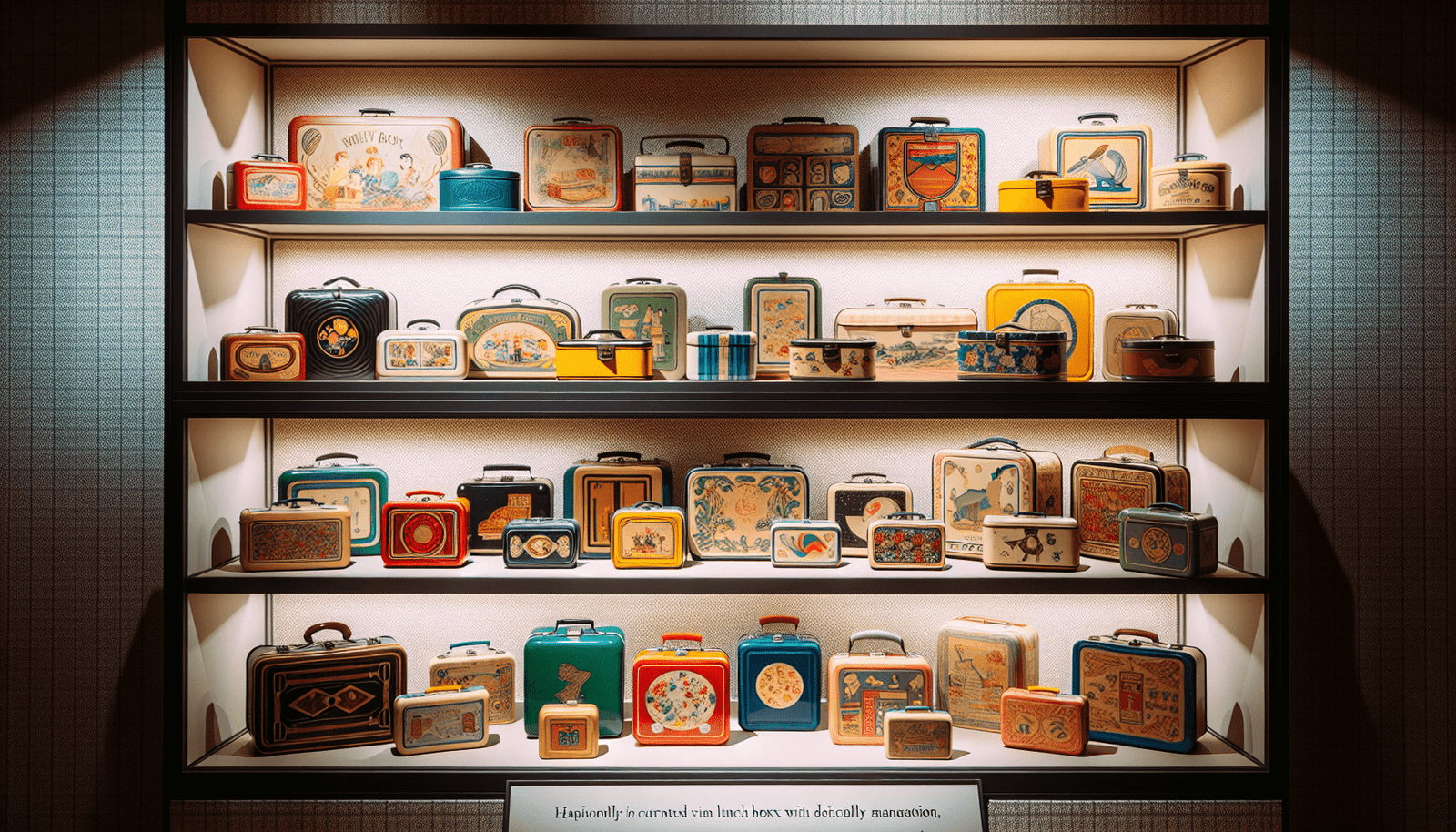Professional Strategies for Lunch Box Collection Preservation

Table of Contents
Understanding the Value of Lunch Box Collections
In recent years, the nostalgia tied to lunch box collections has surged, attracting both enthusiasts and investors. These collections, often rich in cultural and historical significance, serve as a window into a particular era, reflecting popular characters, societal trends, and artistic styles of their time. For collectors, understanding the value of lunch boxes transcends monetary worth; it’s about preserving a piece of heritage.
Historical Background of Lunch Boxes
The rise of lunch boxes as collectible items can be traced back to the mid-20th century. In the 1950s and 1960s, lunch boxes became a canvas for popular culture, featuring beloved characters from television shows, movies, and comic books. The phenomenon gained momentum as manufacturers realized the marketing potential, creating not just a functional item for children, but also a product that capitalized on popular media’s influence.
The Art and Science of Preservation
Preservation is both an art and a science. It involves understanding the materials and methods used in manufacturing lunch boxes, and applying this knowledge to prevent deterioration. Metal lunch boxes, for instance, are prone to rust, while those made of plastic might suffer from warping or discoloration. Each material requires a different approach for effective preservation.
Key Concepts in Collection Preservation
Preserving a lunch box collection requires a strategic approach. It involves various techniques that ensure longevity without compromising the item’s original allure. Below are essential concepts to grasp for effective preservation.
The Importance of Environment
Maintaining a suitable environment is critical. Light, temperature, and humidity can significantly impact the condition of lunch boxes. For instance, excessive exposure to sunlight might fade vibrant colors, while high humidity levels could lead to rust on metal components. An ideal preservation environment is cool, dry, and devoid of direct sunlight.
Cleaning and Handling
Proper cleaning and handling are paramount to maintaining the condition of any collectible item:
- Cleaning materials: Use soft cloths and mild detergents to gently remove dust and grime without damaging the surface.
- Handling practices: Always handle lunch boxes with clean hands or gloves to prevent the transfer of oils or contaminants.
Storage Solutions
The way lunch boxes are stored can greatly affect their preservation:
- Storage design: Opt for shelves with adjustable features to accommodate varying sizes.
- Container usage: Use acid-free materials for storage to prevent chemical reactions that might damage the boxes.

Step-by-Step Preservation Guide
Preservation is an ongoing process that requires diligence and care. Below is a step-by-step guide to help collectors maintain their cherished lunch boxes.
Step 1: Assess the Current Condition
Begin by examining each piece in your collection for any existing damage such as rust, scratches, or fading. Document the condition of each item to monitor changes over time.
Step 2: Develop a Cleaning Routine
Create a regular cleaning schedule tailored to the materials of your lunch boxes. This might include:
- Metal boxes: Cleaning with a solution of mild soap and water, then drying thoroughly to prevent rust.
- Plastic boxes: Wiping down with a damp cloth and avoiding abrasive cleaners that could scratch the surface.
Step 3: Optimize Storage Conditions
Evaluate and optimize your storage conditions by ensuring:
- Temperature: Maintaining a consistent, moderate temperature to prevent material degradation.
- Humidity levels: Using dehumidifiers or silica gel packs to keep moisture at bay.
Step 4: Implement Protection Strategies
Consider protective measures such as:
- Display cases: Using UV-protected display cases to shield boxes from harmful light.
- Organizational tools: Implementing dividers or padding to prevent physical damage between items.
Case Studies and Real-World Examples
Learning from others’ experiences can offer valuable insights into effective preservation methods.
The Collector’s Journey: Preserving a Priceless Collection
Consider the story of a collector who has been amassing vintage lunch boxes since the early 1990s. By employing proper storage solutions and cleaning techniques, they’ve managed to maintain the pristine condition of boxes that date back to the 1960s, ensuring their collection remains a treasured family heirloom.
Comparative Analysis: Preservation Techniques Across Different Materials
Different strategies are required for different materials, as illustrated below:
| Material Type | Preservation Technique | Common Challenges |
|---|---|---|
| Metal | Anti-rust treatment, regular cleaning | Rust, color fading |
| Plastic | UV protection, delicate handling | Warping, chemical degradation |
Such a comparison highlights the importance of tailored preservation strategies and the vigilance required to maintain the quality of a collection.
Visual Aids to Enhance Understanding
The use of visual aids can significantly increase comprehension of best practices. Collectors are encouraged to consult videos and infographics:
Suggested Media
- Video: A tutorial on cleaning techniques for vintage metal lunch boxes.
- Infographic: A step-by-step guide on setting up an ideal storage environment.
Importance of Visual Learning
Visual tools can provide practical insights that may not be immediately apparent from text alone. They offer an engaging way to learn complex preservation techniques and can help in visualizing the dos and don’ts of collection care.
Challenges in Collecting and Preserving Lunch Boxes
While collecting can be an enjoyable hobby, it does come with its own set of challenges. Overcoming these challenges requires dedication and a willingness to continually learn.
Identifying Fake vs. Authentic Items
One challenge is distinguishing authentic vintage items from reproductions:
- Researching provenance: Understanding the history and background of the item can be instrumental in verifying authenticity.
- Consulting experts: Seeking advice from fellow collectors or industry experts can provide clarity in ambiguous situations.
The Evolving Market
The market for vintage lunch boxes is continuously evolving:
- Market fluctuations: Prices can vary significantly based on demand and nostalgia trends, making it crucial for collectors to stay informed about market developments.
- Online platforms: Leveraging online resources and forums can offer insights into current trends and values.

Conclusion: The Harmony of Preservation and Passion
Preserving a lunch box collection is more than a meticulous task; it embodies a passion for history, art, and culture. By employing professional strategies that focus on environment, cleaning, storage, and protection, collectors can ensure that their lunch boxes remain captivating treasures for future generations.
This intricate dance of passion and preservation not only secures the physical integrity of each piece but also preserves the stories and memories they embody. As collectors continue to hone their craft and adapt to new challenges, their collections will grow not just in size, but in cultural significance, showcasing the essence of bygone eras in a tangible form.
In the end, the joy of collecting is in the journey—a journey that, when done well, honors the past while maintaining its relevance in today’s world.

